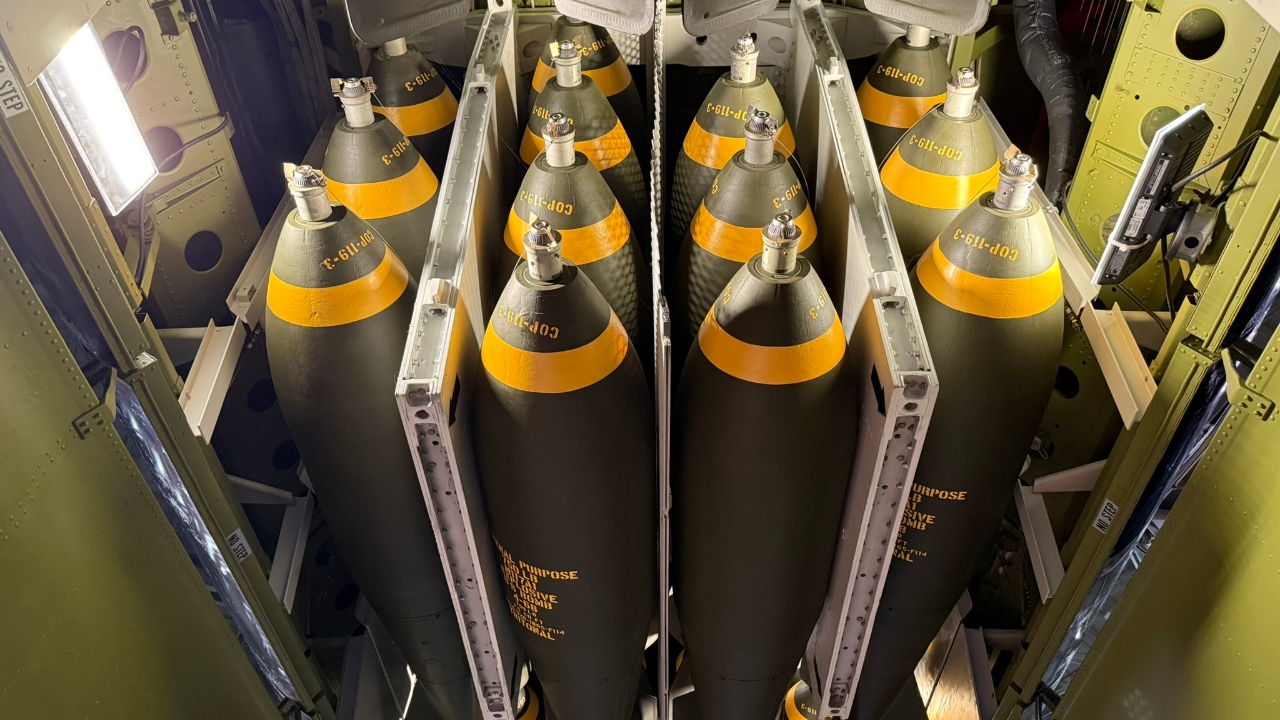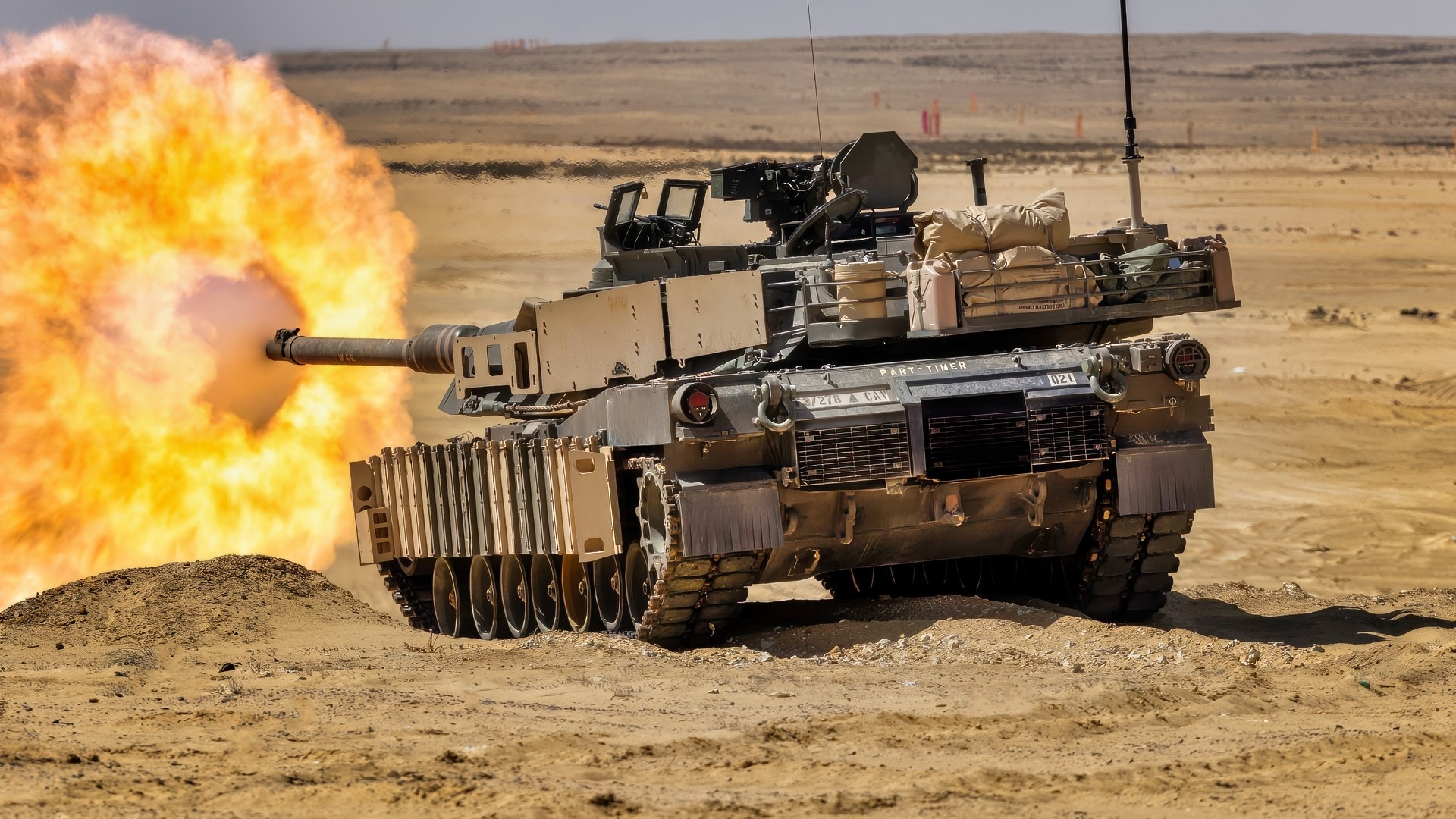Article Summary:
-U.S. forces are still anchored by Cold War–era platforms just as the threat environment is changing faster than the Pentagon can adapt.
-A B-52 fleet nearing its 70th year of service, aircraft averaging 32 years old, and a 62% mission-capable rate point to a mounting readiness crisis.

A B-52H Stratofortress assigned to the 5th Bomb Wing, prepares to take-off at Minot Air Force Base North Dakota, July 14, 2021. Strategic bomber missions enhance the readiness and training necessary to respond to any potential crisis or challenge across the globe. (U.S. Air Force photo by Senior Airman Jesse Jenny)
-Meanwhile, Ukraine shows how cheap drones, precision missiles, and electronic warfare can devastate high-value targets and fixed bases.
-Modernization programs exist, but they are late, over budget, and constrained by an overstretched industrial base.
-The question is no longer about force size alone, but whether America’s legacy arsenal can survive modern threats.
Can America’s Legacy Force Outrun Modern Threats?
In June 2025, a surprise drone strike launched by Ukrainian forces against a Russian air base destroyed at least thirteen long-range bombers, proving the power of inexpensive, unmanned systems to upend modern warfare and destroy some of the most valuable military assets in the world.
That was a lesson for the world – but for the U.S. Department of Defense (DoD), the message should have been particularly clear: a smaller, less powerful force with modest means can inflict severe damage.
And yet the U.S., the world’s greatest superpower, finds itself confronting exactly this scenario while continuing to operate much of its arsenal on platforms designed for and during the Cold War.
Aging aircraft, tanks, and warships built decades ago now face growing threats – from drones and missiles to cyberattacks – for which they were never designed to counter.
The result? A readiness crisis, not simply a force size or budget problem.

B-52 Bomber Bombs. Image Credit: National Security Journal.
In the coming years, as next-generation systems begin to emerge slowly, the U.S. will learn whether a force built for 1980s conditions can survive today’s threat environment.
A Force Built for Yesterday’s Wars
The U.S. military is inarguably heavily dependent on legacy systems conceived during an era of great superpower competition – now swarming drones, automated threats, and hypersonic missiles. The B-52 Stratofortress, for example, is celebrating its 70th year of service – and with upgrades ongoing, is expected to fly into its 100th year.
What that means in practical terms is that many key platforms are now showing their age: average aircraft ages are climbing to unprecedented heights, mission-capable rates are beginning to slip, and procurement is not as efficient as it needs to be to replace these aging platforms promptly.
One report from March 2025 argued that the United States Air Force had a fleet-wide mission-capable rate of only 62% – a strikingly low figure.
And the same report noted that the average age of the fleet is 32 years.
The DoD knows this, but it’s not necessarily easy to fix.
Budget constraints are a real problem and complicate the picture a lot. While total defense spending remains high, procurement has not kept pace with inflation or the increasing complexity of rising global threats from the likes of Russia and China.
The Council on Foreign Relations has noted that hardware costs are now growing faster than inflation, reducing the number of items the Pentagon can buy with the same dollars. That’s out of the DoD’s hands. And the Government Accountability Office (GAO) estimates that deferred maintenance and sustainment backlogs sit at around $137 billion USD.
Procurement programs exist, and work is underway to replace legacy systems with some of the most impressive new systems the world has ever seen.
But many of those programs have also slipped. Heavy combat vehicles, next-generation bombers, and even carriers are all years behind schedule and significantly over budget – and in many cases, those schedule slips and budget increases could worsen still.

A U.S. Air Force B-52H Stratofortress strategic bomber assigned to the 69th Expeditionary Bomb Squadron flies within the U.S. Central Command area of responsibility, Nov. 15, 2024. The B-52H provides strategic options and flexibility to U.S. and coalition senior leaders with the aircraft’s ability to employ a wide range of weapons with precision and deliver a decisive response to adversaries who threaten peace and security across the region. (U.S. Air Force photo)
The industrial base that once churned out ships and aircraft at scale is no longer capable of keeping pace with the U.S. military’s needs without significant reform.
And taking all that together, it’s clear the U.S. is facing a huge problem: its forces are sized and configured for wars of the past, facing threats that are evolving more quickly.
New Threats Move Quicker than the Pentagon
As the hardware side continues to age, the threat is accelerating.
And that’s a dangerous situation for the United States. Consider these three key vectors: drones and loitering munitions, missiles and long-range strike power, and electronic warfare.
Cheap drones are now posing more of a risk than ever before. Ukraine has proven that high-value aircraft can be destroyed using cheaply made drones smuggled across borders. Low-cost unmanned systems have also destroyed tanks, naval assets, and air defenses – all of which are forcing U.S. planners to reassess priorities.
In July 2025, wargames conducted by the U.S. Army, a simulated drone swarm attack on U.S. base,s concluded that base defense was no longer only a job for the military.
Cyberattacks and EW threats are now also targeting supply chains, networks, and logistics systems.
Military platforms are no longer the only targets, and the military’s ability to defend not only frontline assets but infrastructure, command networks, and more is becoming increasingly critical. All the while, the U.S. military is still dependent on aging systems.

A U.S. Air Force B-1B Lancer assigned to the 37th Bomb Squadron receives maintenance during Red Flag 24-3 at Nellis Air Force Base, Nev., July 24, 2024. Red Flag is an exercise that provides Airmen and Guardians with the opportunity to work alongside allied air forces in a realistic combat training environment. (U.S. Air Force Photo by Senior Airman Yendi Borjas)
A legacy fleet supported by legacy networks and maintenance systems cannot keep up for long.
And what about missiles? Adversaries from China to Iran are fielding precision-guided missiles, anti-ship ballistic missiles, hypersonics, and long-range cruise systems.
Traditional U.S. platforms – like air bases, carriers, and logistics hubs – were never built to operate in such a contested environment. But times have changed.
If the Pentagon cannot close the gap between old hardware and fast-evolving threats, the next conflict – should it arrive soon – will expose weaknesses that cannot be quickly remedied.
About the Author:
Jack Buckby is a British author, counter-extremism researcher, and journalist based in New York. Reporting on the U.K., Europe, and the U.S., he works to analyze and understand left-wing and right-wing radicalization, and reports on Western governments’ approaches to the pressing issues of today. His books and research papers explore these themes and propose pragmatic solutions to our increasingly polarized society. His latest book is The Truth Teller: RFK Jr. and the Case for a Post-Partisan Presidency.










